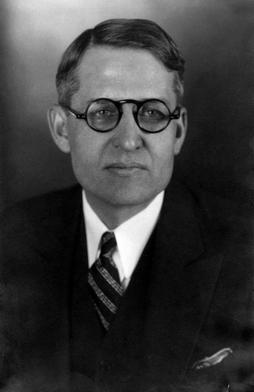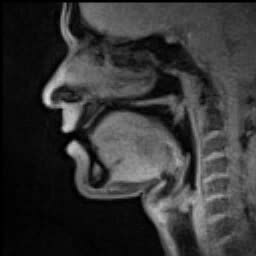Stuttering, also known as stammering, is a speech disorder characterized externally by involuntary repetitions and prolongations of sounds, syllables, words, or phrases as well as involuntary silent pauses or blocks in which the person who stutters is unable to produce sounds.

The human voice consists of sound made by a human being using the vocal tract, including talking, singing, laughing, crying, screaming, shouting, humming or yelling. The human voice frequency is specifically a part of human sound production in which the vocal folds are the primary sound source.
Fis phenomenon is a phenomenon during a child's language acquisition that demonstrates that perception of phonemes occurs earlier than a child's ability to produce the appropriate allophone. It is also illustrative of a larger theme in child language acquisition: that skills in linguistic comprehension generally precede corresponding skills in linguistic production. The name comes from an incident reported in 1960 by J. Berko and R. Brown, in which a child referred to his inflatable plastic fish as a fis. However, when adults asked him, "Is this your fis?" he rejected the statement. When he was asked, "Is this your fish?" he responded, "Yes, my fis." This shows that although the child could not produce the phoneme /ʃ/, he could perceive it as being different from the phoneme /s/. In some cases, the sounds produced by the child are actually acoustically different, but not significantly enough for others to distinguish since the language in question does not make such contrasts.
Speech disorders, impairments, or impediments, are a type of communication disorder in which normal speech is disrupted. This can mean fluency disorders like stuttering, cluttering or lisps. Someone who is unable to speak due to a speech disorder is considered mute. Speech skills are vital to social relationships and learning, and delays or disorders that relate to developing these skills can impact individuals function. For many children and adolescents, this can present as issues with academics. Speech disorders affect roughly 11.5% of the US population, and 5% of the primary school population. Speech is a complex process that requires precise timing, nerve and muscle control, and as a result is susceptible to impairments. A person who has a stroke, an accident or birth defect may have speech and language problems.

Harvey Fletcher was an American physicist. Known as the "father of stereophonic sound", he is credited with the invention of the 2-A audiometer and an early electronic hearing aid. He was an investigator into the nature of speech and hearing, and made contributions in acoustics, electrical engineering, speech, medicine, music, atomic physics, sound pictures, and education. Following his death, he was credited with collaborating with his doctoral advisor, Robert Millikan, on the Nobel-prize winning oil drop experiment which first determined the charge of the electron.
Lip reading, also known as speechreading, is a technique of understanding a limited range of speech by visually interpreting the movements of the lips, face and tongue without sound. Estimates of the range of lip reading vary, with some figures as low as 30% because lip reading relies on context, language knowledge, and any residual hearing. Although lip reading is used most extensively by deaf and hard-of-hearing people, most people with normal hearing process some speech information from sight of the moving mouth.

The McGurk effect is a perceptual phenomenon that demonstrates an interaction between hearing and vision in speech perception. The illusion occurs when the auditory component of one sound is paired with the visual component of another sound, leading to the perception of a third sound. The visual information a person gets from seeing a person speak changes the way they hear the sound. If a person is getting poor-quality auditory information but good-quality visual information, they may be more likely to experience the McGurk effect.
Gay male speech has been the focus of numerous modern stereotypes, as well as sociolinguistic studies, particularly within North American English. Scientific research has uncovered phonetically significant features produced by many gay men and demonstrated that listeners accurately guess speakers' sexual orientation at rates greater than chance. Historically, gay male speech characteristics have been highly stigmatized and their usage may be sometimes coded to a limited number of settings outside of the workplace or other public spaces.

Speech is a human vocal communication using language. Each language uses phonetic combinations of vowel and consonant sounds that form the sound of its words, and using those words in their semantic character as words in the lexicon of a language according to the syntactic constraints that govern lexical words' function in a sentence. In speaking, speakers perform many different intentional speech acts, e.g., informing, declaring, asking, persuading, directing, and can use enunciation, intonation, degrees of loudness, tempo, and other non-representational or paralinguistic aspects of vocalization to convey meaning. In their speech, speakers also unintentionally communicate many aspects of their social position such as sex, age, place of origin, physical states, psychological states, physico-psychological states, education or experience, and the like.
Speech perception is the process by which the sounds of language are heard, interpreted, and understood. The study of speech perception is closely linked to the fields of phonology and phonetics in linguistics and cognitive psychology and perception in psychology. Research in speech perception seeks to understand how human listeners recognize speech sounds and use this information to understand spoken language. Speech perception research has applications in building computer systems that can recognize speech, in improving speech recognition for hearing- and language-impaired listeners, and in foreign-language teaching.

Speech–language pathology (also known as speech and language pathology or logopedics) is a healthcare and academic discipline concerning the evaluation, treatment, and prevention of communication disorders, including expressive and mixed receptive-expressive language disorders, voice disorders, speech sound disorders, speech disfluency, pragmatic language impairments, and social communication difficulties, as well as swallowing disorders across the lifespan. It is an allied health profession regulated by professional bodies including the American Speech-Language-Hearing Association (ASHA) and Speech Pathology Australia. The field of speech-language pathology is practiced by a clinician known as a speech-language pathologist (SLP) or a speech and language therapist (SLT). SLPs also play an important role in the screening, diagnosis, and treatment of autism spectrum disorder (ASD), often in collaboration with pediatricians and psychologists.
Clinical linguistics is a sub-discipline of applied linguistics involved in the description, analysis, and treatment of language disabilities, especially the application of linguistic theory to the field of Speech-Language Pathology. The study of the linguistic aspect of communication disorders is of relevance to a broader understanding of language and linguistic theory.
Fluency refers to continuity, smoothness, rate, and effort in speech production. It is also used to characterize language production, language ability or language proficiency.
LGBT linguistics is the study of language as used by members of LGBT communities. Related or synonymous terms include lavender linguistics, advanced by William Leap in the 1990s, which "encompass[es] a wide range of everyday language practices" in LGBT communities, and queer linguistics, which refers to the linguistic analysis concerning the effect of heteronormativity on expressing sexual identity through language. The former term derives from the longtime association of the color lavender with LGBT communities. "Language", in this context, may refer to any aspect of spoken or written linguistic practices, including speech patterns and pronunciation, use of certain vocabulary, and, in a few cases, an elaborate alternative lexicon such as Polari.
Speech and language impairment are basic categories that might be drawn in issues of communication involve hearing, speech, language, and fluency.
Auditory feedback (AF) is an aid used by humans to control speech production and singing by helping the individual verify whether the current production of speech or singing is in accordance with his acoustic-auditory intention. This process is possible through what is known as the auditory feedback loop, a three-part cycle that allows individuals to first speak, then listen to what they have said, and lastly, correct it when necessary. From the viewpoint of movement sciences and neurosciences, the acoustic-auditory speech signal can be interpreted as the result of movements of speech articulators. Auditory feedback can hence be inferred as a feedback mechanism controlling skilled actions in the same way that visual feedback controls limb movements.
Speech acquisition focuses on the development of vocal, acoustic and oral language by a child. This includes motor planning and execution, pronunciation, phonological and articulation patterns.
The Illinois State UniversityCollege of Arts and Sciences administers liberal arts departments, schools, and programs at Illinois State University. The College of Arts and Sciences is divided into three groups: Science and Mathematics, Social Studies, and Humanities.
Deafness has varying definitions in cultural and medical contexts. In medical contexts, the meaning of deafness is hearing loss that precludes a person from understanding spoken language, an audiological condition. In this context it is written with a lower case d. It later came to be used in a cultural context to refer to those who primarily communicate through sign language regardless of hearing ability, often capitalized as Deaf and referred to as "big D Deaf" in speech and sign. The two definitions overlap but are not identical, as hearing loss includes cases that are not severe enough to impact spoken language comprehension, while cultural Deafness includes hearing people who use sign language, such as children of deaf adults.
James Bruce Tomblin is a language and communication scientist and an expert on the epidemiology and genetics of developmental language disorders (DLD). He holds the position of Professor Emeritus of Communication Sciences and Disorders at the University of Iowa.




